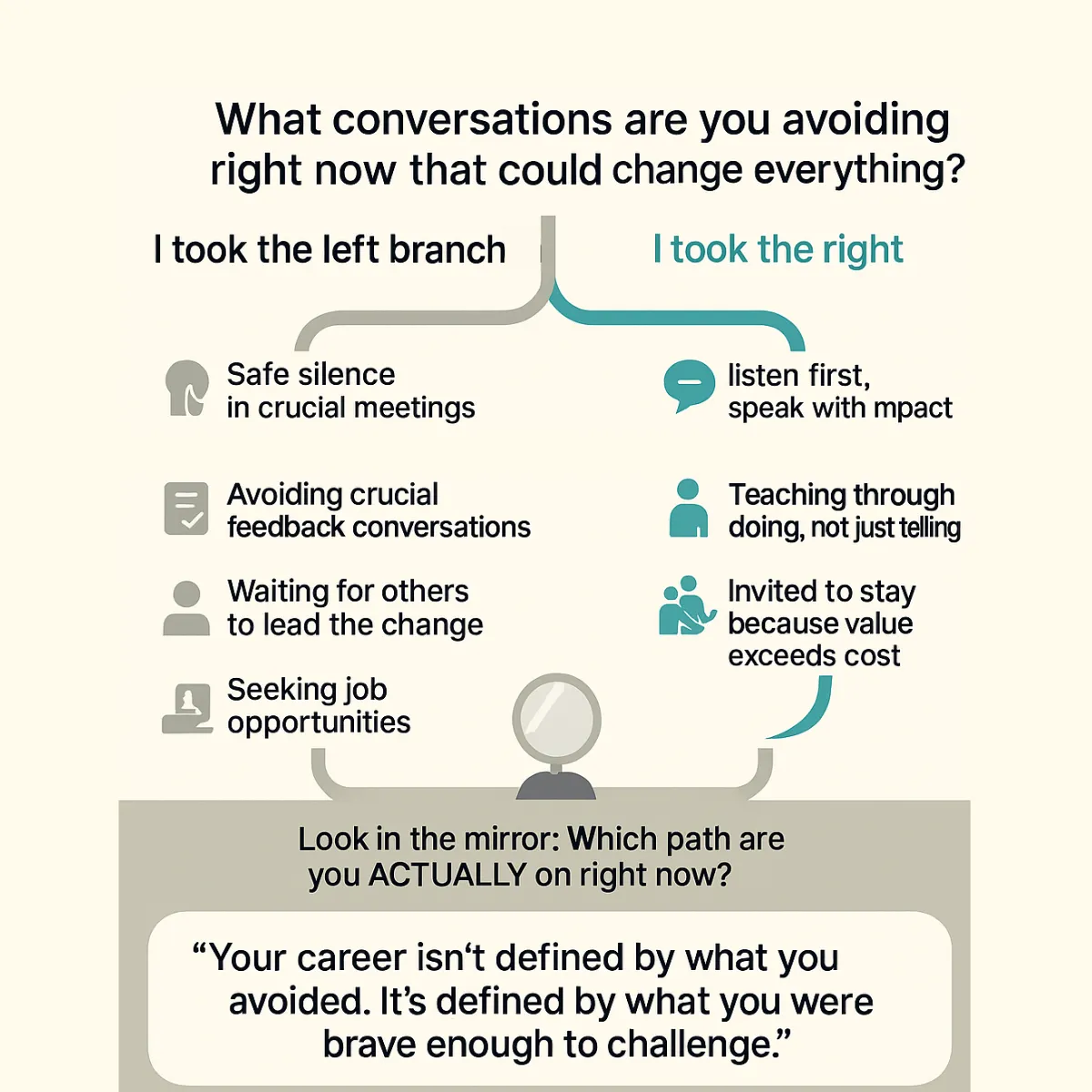
The Delivery Leader's Guide to Staying Relevant When Markets Tighten
When Experience Comes with a Price Tag
Early in my career, I participated in a transformation initiative where the client invested $3.2 million in a program that ultimately didn't deliver its intended outcomes. Multiple factors contributed to this result, but looking back, I recognise how my approach to challenging key stakeholders played a significant role.
I had everything that should have enabled success: executive sponsorship, comprehensive stakeholder interviews, and access to decision-makers. Yet in several critical moments—particularly when challenging opposing viewpoints—I relied on conviction rather than skilful navigation.
The Buddhist concept of "skilful means" was entirely absent from my toolkit then. While my intentions were aligned with the client's best interests, my execution lacked the nuance required for complex organisational dynamics.
"Being right doesn't guarantee being effective."
The Contrast That Revealed the Pattern
Recently, I found myself in a similar engagement scenario—comparable access, similar stakeholder complexity, and equally challenging organisational dynamics. This time, however, I approached key interactions differently:
I maintained professional assertiveness while practising acute awareness of timing
I chose strategic moments to introduce challenges rather than reacting immediately
I focused on facilitating discovery rather than pushing conclusions
The result: successful transformation, expanded client relationships, and sustainable change that continues to generate value.
The Professional Landscape Today
Through extensive observation of delivery leaders navigating market uncertainty, I recognise three distinct approaches to professional influence:
1. The Cautious Caretakers
Professionals who identify systemic shortcomings yet maintain substantial distance between their potential influence and actual application. They preserve professional safety at the cost of transformational impact, effectively acting as passengers rather than drivers of necessary change.
2. The Strategic Change Agents
Leaders who master focused, high-impact interventions within appropriate timeframes. They secure executive buy-in, execute rapid but sustainable change, and establish lasting value while demonstrating sophisticated stakeholder management.
3. The Conviction-Driven Crusaders
Those whose strong beliefs about transformation methodologies overshadow strategic timing and relationship management. When personal investment in specific approaches overrides adaptability, effectiveness diminishes regardless of expertise.
The Evolution of Professional Impact
My journey from those early lessons to current practice involved developing several critical capabilities:
Make Space to Listen First: No matter what, give their opinion room to be heard first. Don't pretend—carry a non-judgmental mind. Try it; it's not as easy as you think. The best insights often emerge from silence, not speech.
Test the Waters with Small Probes: Poke the system with little perturbations and see what happens. If you introduce a small suggestion and get massive resistance, you've found a "dangerous place" that needs careful navigation.
Watch for Action, Not Just Agreement: People can nod enthusiastically in meetings, then go back to their desk and change nothing about their behaviour. Doing is the gold standard. Look for evidence of real behavioural shift, not verbal commitments.
Move from Doing to Enabling: Start by grabbing the whiteboard marker and doing it yourself—don't just advise, enable, or support. Lead from the front, show them how, teach while doing. When you sense the timing is right, move from front of the room to the back, transitioning from directing to supporting as they step into the work themselves.
Ask the Hard Question Directly: It might feel weird at first, maybe even unsettling for your sponsor or manager, but learn to ask: "Am I delivering value at the level you expected this year?" I don't mean at those contrived performance review meetings documented in enterprise tools. Look people in the eye and have real, open conversations about your performance relative to expectations. This is how you know if you're truly adding value—not through bureaucratic check-boxes, but through honest dialogue.
This evolution taught me that modern delivery leadership requires both courage to identify necessary changes and sophistication to introduce them effectively.
Mastery Through Measured Risk
Early in my career, my need to be "right" cost me opportunities to have real influence. I learned the hard way that being the smartest person in the room rarely translates to being the most valuable.
Now I measure success differently. I talk less, listen more. I give my opinion only after truly hearing theirs. I hold my ideas lightly, ready to adopt new perspectives that serve the outcome better than my original thought.
The metric that matters most to me today: being asked back. Being invited to stay around and continue contributing. This happens when the value I create consistently exceeds the cost of my involvement. It's not about being right; it's about being useful.
Staying Relevant in a Tightening Market
In today's tightening labour market for delivery capability, the leaders who consistently generate demand for their expertise aren't necessarily the most technically proficient. They're the ones who've mastered the art of challenging with purpose while maintaining organisational trust.
As the market becomes more selective, the ability to "initiate meaningful change while maintaining organisational stability" transforms from nice-to-have to essential. When delivery leaders combine necessary disruption with skilful execution, they position themselves as strategic partners rather than temporary resources. They become the people organisations call first when challenges arise—not last when budgets allow.
This is the new professional currency: the capacity to add value through skilful challenge. When your approach consistently delivers positive ROI on the cost of your involvement, you create your own job security regardless of market conditions.


